Main Road Open Plaques Walk

Explore the history of Knysna through the stories of its buildings on this self-guided walking tour along Main Road
Many of Knysna’s historic sites have been labeled with brown-and-white Open Plaques that tell the stories of the buildings and the people associated with them.
Open Plaques - “the museum of the street” - is an international, community-based project “that catalogues, curates, and promotes commemorative plaques and historical markers installed on buildings and landmarks throughout the world."
The Knysna Historical Society has researched and placed almost seventy Open Plaques sign boards around town.
Visit the Knysna Historical Society on openplaques.org
Main Road Historic Walk
Here’s our suggestion for a short, one- to two-hour walk through the old part of town. (Text in quotes below is released and used under a Public Domain Dedication and License 1.0 - courtesy Knysna Historical Society and Open Plaques.)
Imperial Hotel
- Begin your tour at Pledge Square (outside Steers and Postnet). Across the road you’ll see the preserved facade of the old Imperial Hotel (see illustration #3 in our 'Heritage Building Walk' gallery on this page). “On this site stood a thatch roofed wooden building owned by William Gunn McPherson. Bought by Henry Morgan in 1890 it later became known as the West End Hotel. The present building, designed by Sydney Grosvenor of Great Brak River and built by Arthur George Watton, was completed a year after the West End Hotel was demolished in 1915. The Knysna Oyster Club and the Knysna Bowling Club both had their formal beginnings on this site. The Devereux family ran the hotel during 1935 to 1974. In 1986 the hotel was enlarged and came under management control of the Protea Hotels Group.”
Hilhursheim
- Walk in an easterly direction (towards Plett), past Hilhursheim at 42 Main Road (now the Knysna Inn. Illustration #2). “One of a pair of similar buildings … built by William McPherson in the 1860s. [It] was the first home of the Thesens, a Norwegian family who arrived in Knysna in April 1870.”
Visit Knysna
- Continue past the Old Post Office (now Visit Knysna. Illustration #1), built in 1924. This building housed the Knysna Post Office until 1979, after which it was occupied by the Knysna Publicity Association (later Knysna Tourism), which was founded in 1929. The building, which now houses the municipal tourist information office, was restored in 2007. “Prior to the restoration, the Tourism office was well known for the huge Knysna forest elephant skeleton on display in the large front window.”
First National Bank
- Continue towards the robots (street lights) at the intersection of Gray Street and Main Road. On your right you’ll see the First National Bank (illustration #4). “The first home on this site was built before 1843. This present building dates back to around 1870, and served as a private home and shop. Bought by the Thesen family in 1876. Barclay's Bank DCO (later FNB) opened their first branch on 1 August 1919, renting the building until purchasing same in 1950. The small entrance door in Main Street led to the manager's residence upstairs. It has been altered over the years with the upper floor converted into banking offices. The corner gable was added later. When the Main Street was widened in 1968, elephant bones were found under the front steps.”
Jonker Building / Die Ou Fabriek
- Cross Gray Street, and walk past the Jonker Building / Die Ou Fabriek on your left hand side (Illustration #5). “On this site stood the first DR Church Hall building, built on land purchased by the church in 1898... It was a corrugated iron structure, also used at one time as a police station, and later used by a newsagent, The Knysna Advertiser. The present building was built as a furniture factory for Mr. Jacobus Jonker, a locally trained cabinet maker, who bought the southern portion of the property in 1930 for £1800, with a showroom on the Main Street and the furniture factory behind.”
28 Main Street
- The next building on your left - 28 Main Street (tenants include the restaurant, ?-on-Main, Illustration #6) - “was erected by Hendrick Stroebel around 1877 and sold to his daughter Cornelia who was married to William Groom, a well-known apothecary and photographer. William Groom ran his business here. He was sequestrated in 1872 and the property then changed hands a few times being bought in 1903 by George Parkes snr., founder of Geo.Parkes & Sons, Knysna, and subsequently by his son Stephen in 1916, who raised the height of the second floor. The property changed hands again in 1943 when bought by the lawyer and newspaper correspondent, Herbert Tidswell. The family continued to live here until 2002.”
Templeman’s Arcade
- Continue walking eastwards along Main Road. On your right you’ll see Templeman’s Arcade (Illustration #7). “Btuilt as a store in 1883 for Mrs Brown's (later Templeman) shop across the road. Partially used after 1895 by Wehrle Jewellers. In 1913 converted by owner James Templeman into a general dealers shop, adding the plate glass windows in front, and transferring the business from across the road. Bought by Thesen & Co. and closed on sale of the business to Barlow Rand in the mid 1970s.”
War Memorial
- Continue past the War Memorial on your left (Illustration #8). “On instigation in 1921 by Harald Thesen, a veteran of the First World War, a subscription list was opened and £450 was collected towards a war memorial to honour those who had lost their lives in the service of their country. Designed by architect Charles Walgate of Cape Town and built by John Donald of Knysna from stone quarried on the Brenton Hills, the memorial included a two-edged bronze sword and wreath designed by Marlon Walgate and a bronze plaque by HG Stevens, listing the names of the fallen. The War Memorial was unveiled on 17 December 1922 by The Reverend Captain Alfred Duthie, M.C., Chaplain to the Forces in Flanders and France during The Great War. Plaques bearing the names of the deceased from the Second World War and the Bush War have been added.”
Knysna Library
- Behind the War Memorial you’ll see the imposing facade of the Knysna Library (Illustration #9). “Built at a cost of £1250 on land purchased from William Lloyd for £65, this stone building replaced an earlier public reading room of timber construction which stood on the corner of Main (previously called Church) and Long Streets, built in 1858 during the tenure of the of the first magistrate Mr James Fichat. Mayor C W Thesen opened the present library building, with its west wing only, which was built by Cooper and Rogers of Oudtshoorn with rooflag erected by local carpenter, Andrew Hepburn of The Knysna Forest Company, on 28 November 1893. The east wing was added in 1936 using matching stone, most of which had been quarried in 1893 and stored for the purpose.”
Municipal Payments office
- Continue walking eastwards along Main Road.You’ll see the Municipal Payments office on the opposite side of the road, next to the entrance to Woodmill Lane. This is the old Standard Bank building (Illustration #10). “The original Standard Bank was a double storey building owned and built by James H. Templeman in 1894, with the banking hall on the ground floor and the manager's dwelling above. After leasing the building for many years the Bank purchased it in February 1919. After World War II the upper storey was removed and the ground floor was enlarged. In 2007 the Standard Bank moved its offices to the new Knysna Mall. The Knysna Municipality now occupies the building.”
Woodmill Lane
- Behind the Municipal Payments Office stands Woodmill Lane shopping centre - a repurposed sawmill. “The first sawmill on this site was built by The Knysna Steam Sawmills Company, established by William Lloyd of Port Elizabeth in 1875. The steam sawmill was powered by a 16 horsepower Ransome engine imported from England. Prior to this, all cutting and working of timber from the Knysna forests was done manually on-site. The company was bought in 1891 by George Parkes, Chairman of A&F Parkes of Birmingham, Edge Tool manufacturers, who exported Kamassie (boxwood) needed for the manufacture of bobbins in England. The company changed its name to the Knysna Forest Company in 1892 and manufactured wooden wheelbarrows, wagon-parts and tool handles. The company was renamed George Parkes & Sons in 1902. The mill was closed in 1984 and transferred to the Knysna Industrial Area. This 1919 sawmill building now forms part of the Woodmill Lane shopping complex.”
Melville’s Corner
- Continue walking eastwards. On the corner of Long Street and Main Road, you’ll come to Melville’s Corner (Illustration #13. You’ll know the building by the white pillars on the edge of the sidewalk). “Owned in 1876 by William Milne, a carpenter and undertaker, who built the original building. In 1882 he let one room to the Standard Bank. In 1883 the bank rented the whole building as both Bank and Manager's residence. Later owned by Alexander McMaster in 1892, McFarlane in 1896 and acquired by Thesen & Co. in 1912, who renamed it Melville's. The curved gable with decorative plaster work was added in 1922. The store was closed in the mid 1970's on the sale of Thesen & Co to Barlow Rand.”
The Lychgate
- Cross Long Street, and walk past The Lychgate at the entrance to the churchyard on your left (Illustration #14). “A lychgate is a gateway covered with a roof found at the traditional entrance to a typical British churchyard. This lychgate was donated by the Thesen family in 1935 in memory of their mother, Mrs. Bessie Thesen, daughter of Captain Christopher Harison, Knysna's first Conservator of Forests, who died in 1901. Built by E. Clementson of solid teak and red ironstone which was quarried north of Knysna.”
St. George’s Anglican Church
- In the churchyard, you’ll see St. George’s Anglican Church - the smaller of the two churches on this property (Illustration #15). ”John Rex laid the foundation stone of this church in 1849 built on land donated by his father, George Rex, founder of Knysna. Construction commenced in 1850 based on a plan adapted by Sophy Gray, wife of the first Anglican Bishop of south Africa. The church was to be built then as the chancel of a larger church and when funds permitted, the nave etc. in the plan would be added. The church was consecrated in 1855. In 1919 the decision was taken to build a new church to the north."
New St. George’s Church
- The larger of the two churches on this property is known as the New St. George’s Church (Illustration # 16). “In April 1919 during the incumbency of the Rev. B.C. Mortimer, a resolution by the parishioners was taken to build a new church which would also serve to be a living monument to those that had died during the Great War 1914-1918. The project came to a halt in 1922 when initial tenders revealed a severe shortage of funds, and it was only in September 1926 that the foundation stone was laid by the Rt. Rev. Bishop Henry Sidwell, DD, Lord Bishop of George. The design of the church, to accommodate a congregation of 250, was by architects Simpson & Bridgman of Oudtshoorn, the tender offer of £6300 was accepted and the builder was J. Donald of Knysna. The building was completed by a Building Committee. To raise additional funds, glebe lands in Vootrekker Road and Paradise Farm were sold, and after many setbacks, the first service in the new church was held in 1928. The Rt. Rev. Bishop Herbert L. Gwyer consecrated the church in 1937 when all the debts had been settled.”
Royal Hotel
- Continue walking eastwards and cross Queen Street to the Royal Hotel (previously St. George’s Tavern; Illustration #17). “Captain Thomas Horn acquired this site from Charles William Dutton in 1856, and ran a small thatched hostelry, the "St. George's Tavern", here, which he enlarged into a corrugated iron structure. After the 1867 royal visit by Prince Alfred, Duke of Edinburgh, second son of Queen Victoria of Britain, the hotel was renamed the Royal Hotel. During this visit the Prince hunted elephant in the Knysna forest. The hotel remained in the hands of the Horn family until 1930 when Donald John Fraser purchased it, having leased the property from 1923. The present building was designed by architects Simpson & Bridgman of Oudtshoorn and built by Claude Rogers of George in 1938-1939. The foundation stone was laid by CW Thesen in October 1939. The Royal Hotel has now been redeveloped into a centre with a hotel, gym, offices and retail shops.”
Millwood House
- Now cross Main Road and walk downhill on Queen Street until you come to the Knysna Museum’s Millwood House on your left hand side. “This building stands on property purchased in 1873 by William Charles Guest, and the section on which Millwood House now stands was sold to Donald Benn in 1906, who in turn sold it to William Cook in 1909. The building itself, which was originally built in the Millwood Goldfields, was later relocated to Knysna, in sections, by ox-wagon, and re-constructed where St George's Church Hall now stands. It was moved to this present site by the then owner of the building, William Duncan McFarlane, who let the house to William Cook in 1910. Cook traded as a shoe-maker from this house, using the room to the north with its own door onto the veranda. The building was sold in 1972 out of the Cook estate to Mr Silberman who offered free use of the building to the Millwood House Committee (now the Knysna Historical Society).”
Old Gaol (it's pronounced 'Jail')
- Retrace your steps uphill on Queen Street to the Knysna Museum’s Old Gaol, on the corner with Main Road (Illustration #20). “In 1858 the Governor of the Cape Colony directed that that all Divisional Councils obtain plans for the building of a gaol, which was particularly relevant to Knysna due to the need to house convict labour needed for the planned Longkloof mountain pass known today as the Prince Alfred Pass. The first convicts arrived in August 1858 to build the gaol that was sited on 4 lots of land purchased from John Sutherland for £56. Building work commenced in 1859 on a gaol designed by the government's Civil Engineer's Department to hold 30 prisoners. Resident Magistrate James Fichat laid the foundation stone on 19 February 1859 in a ceremony following in the Freemason tradition. The building was completed later that same year and the mountain pass in 1867. The gaol was enlarged and in 1883 could accommodate 60 prisoners.”
We hope you enjoyed your walk!
Visit the Knysna Museum online
Knysna Museum occupies two properties on Queen Street:
- Millwood House complex - which also features Parkes Cottage; the Parkes Shop (dedicated to displays about the timber heritage of Knysna); and the Pitt Street House (Knysna’s archaeology, geology, and gold mining);
- The Old Gaol - where you'll find Knysna's Maritime Collection, Angling Museum, etc.
Credits
- Original research for Knysna's Open Plaques: Margaret Parkes




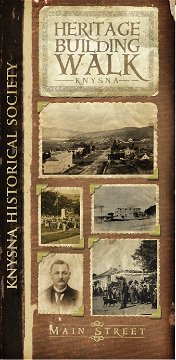
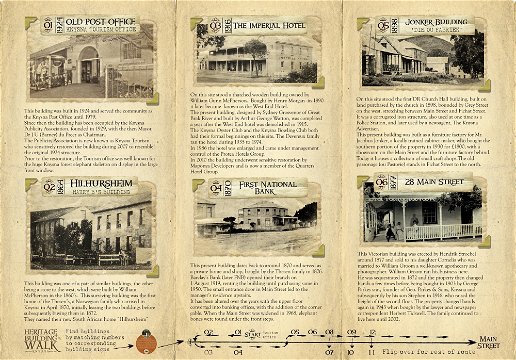


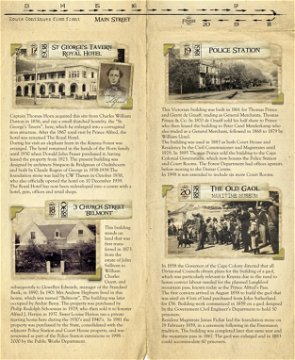
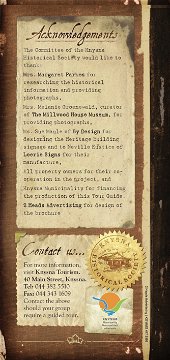
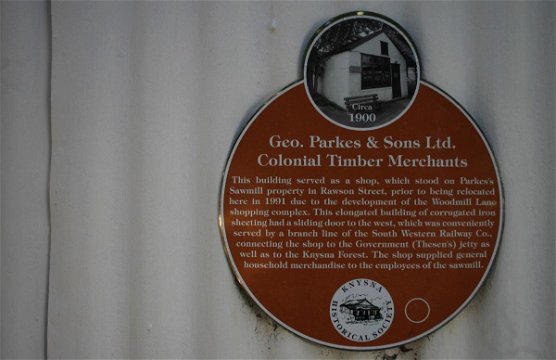

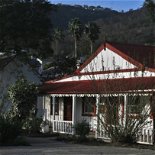


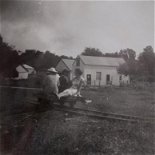


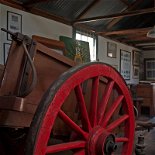
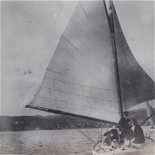


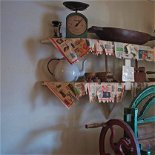
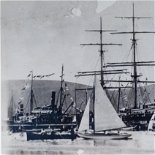

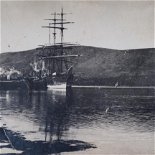


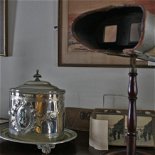
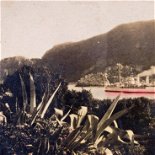
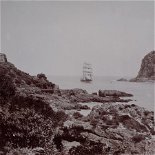
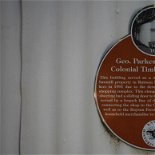
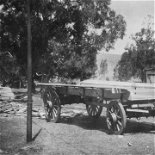
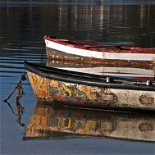

Share This Page